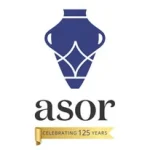
INITIATIVES & PROJECTS
From its earliest days, ASOR has sponsored projects central to its mission to initiate, encourage, and support research into, and public understanding of, the history and cultures of the Near East and wider Mediterranean. In 1901, a scant year after ASOR was founded, we sponsored our first archaeological excavation, in Sidon, and ASOR continued to sponsor excavations in the Southern Levant, Iraq, Turkey, Cyprus – and even as far west as Carthage – over the next seven decades. Today, over one hundred fieldwork projects in the eastern Mediterranean and North Africa– both ongoing excavations and fieldwork publication projects – are affiliated with ASOR.
ASOR’s publication program also has a long and venerable history, dating back to the publication of the first volume of the Bulletin of the American Society of Overseas Research (BASOR) in 1919. Today, ASOR still publishes BASOR, as well as two other journals (Near Eastern Archaeology and the Journal of Cuneiform Studies), three monograph series (the Annual of the American Society of Overseas Research, or AASOR; the Archaeological Reports Series, or ARS; and the Journal of Cuneiform Studies Supplemental Series), and two e-newsletters (News@ASOR and The Ancient Near East Today).
More recently, ASOR has launched several new initiatives. The ASOR Cultural Heritage Initiatives program is devoted to protecting, preserving, and presenting to the public the historic and cultural heritage of the Near East and the wider Mediterranean and to raise awareness of its degradation. The ASOR Archives project is dedicated to protecting and preserving ASOR’s own heritage, by cataloguing and safely housing papers, photographs, and other materials that document ASOR’s twentieth and twenty-first century contributions to the study of the archaeology and history of the Near East and wider Mediterranean.
The Women of ASOR map is a resource developed by ASOR’s Initiative on the Status of Women that displays the locations of ASOR’s women members from around the globe, including the universities, museums, or other organizations where they might work and the sites at which they might excavate. The Levantine Ceramics Project is an open, interactive website that researchers can use to submit and find information about produced in the Levant from the Neolithic era (c. 5500 B.C.E.) through the Ottoman period (c. 1920 C.E.).

